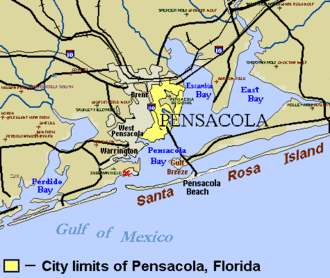| East Bay | |
|---|---|
| Galvez Bay | |
 East Bay (upper right) is east of Pensacola, Florida and Escambia Bay. | |
| Location | Santa Rosa County, Florida |
| Coordinates | 30°32′N87°01′W / 30.533°N 87.017°W |
| Type | Bay |
East Bay is a bay located in the far western Florida Panhandle. [1] Unusually, East Bay is connected to open waters via Pensacola Bay to its southwest. The bay is fed primarily by the Blackwater River and the East Bay River.

